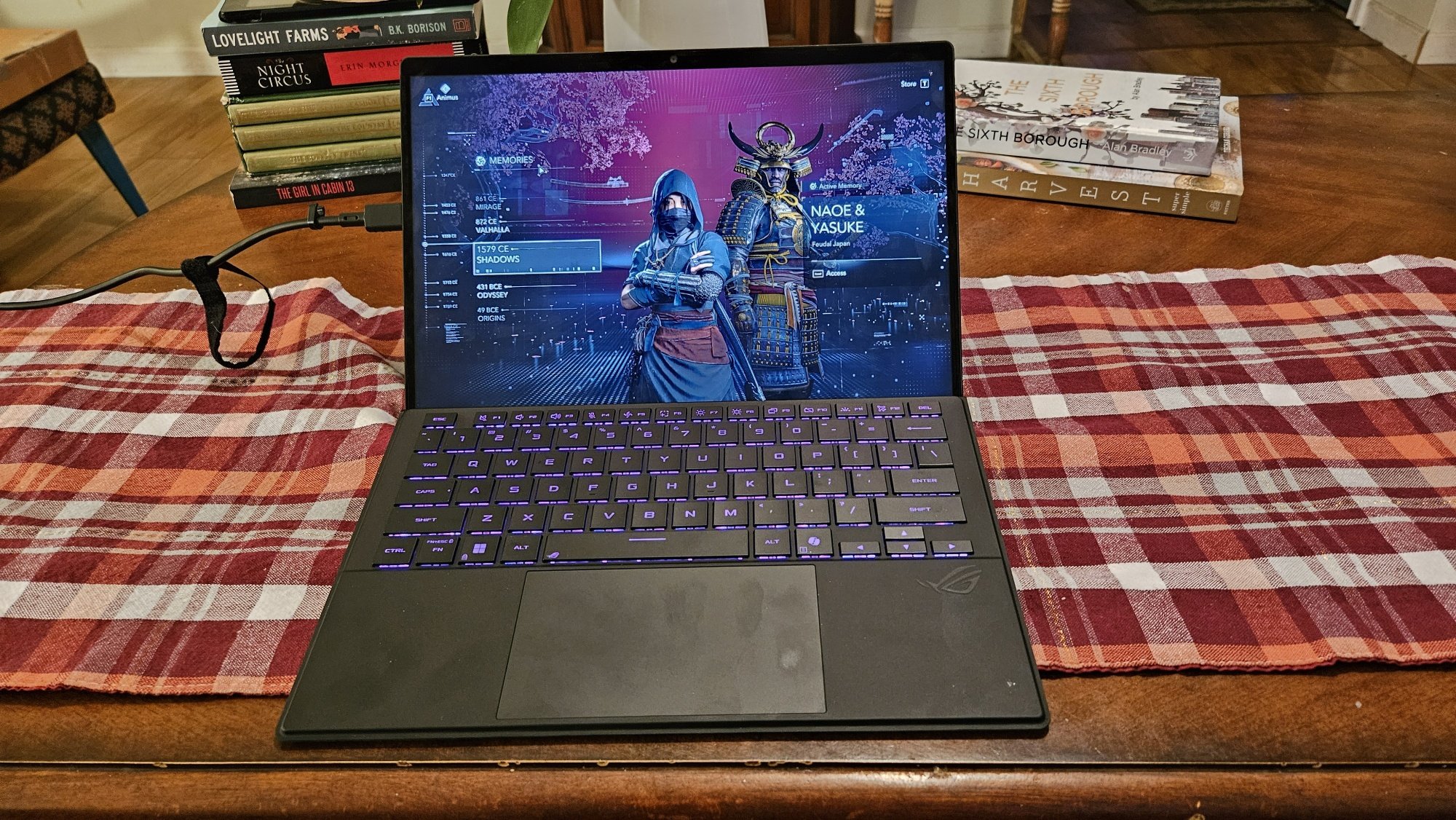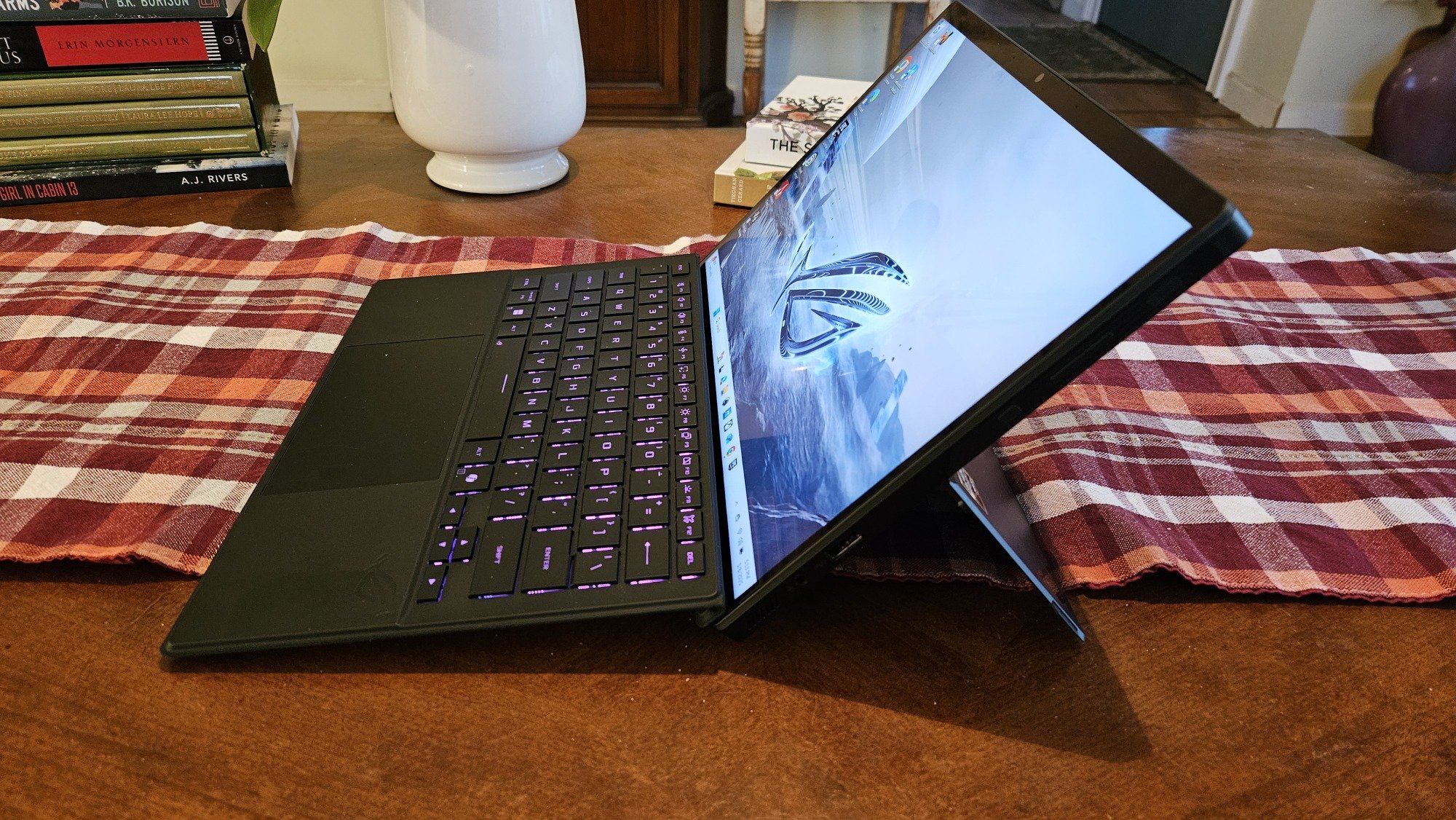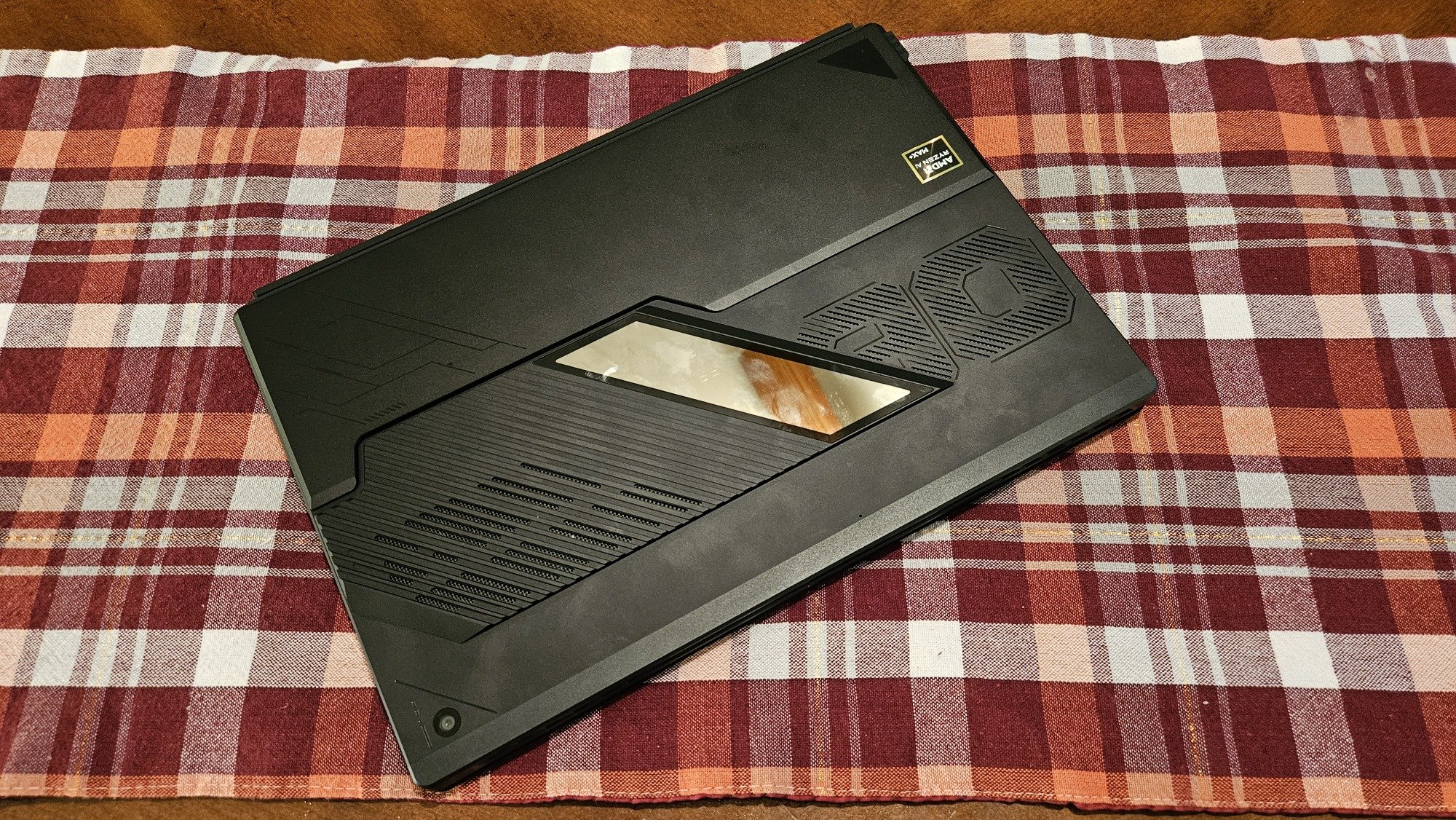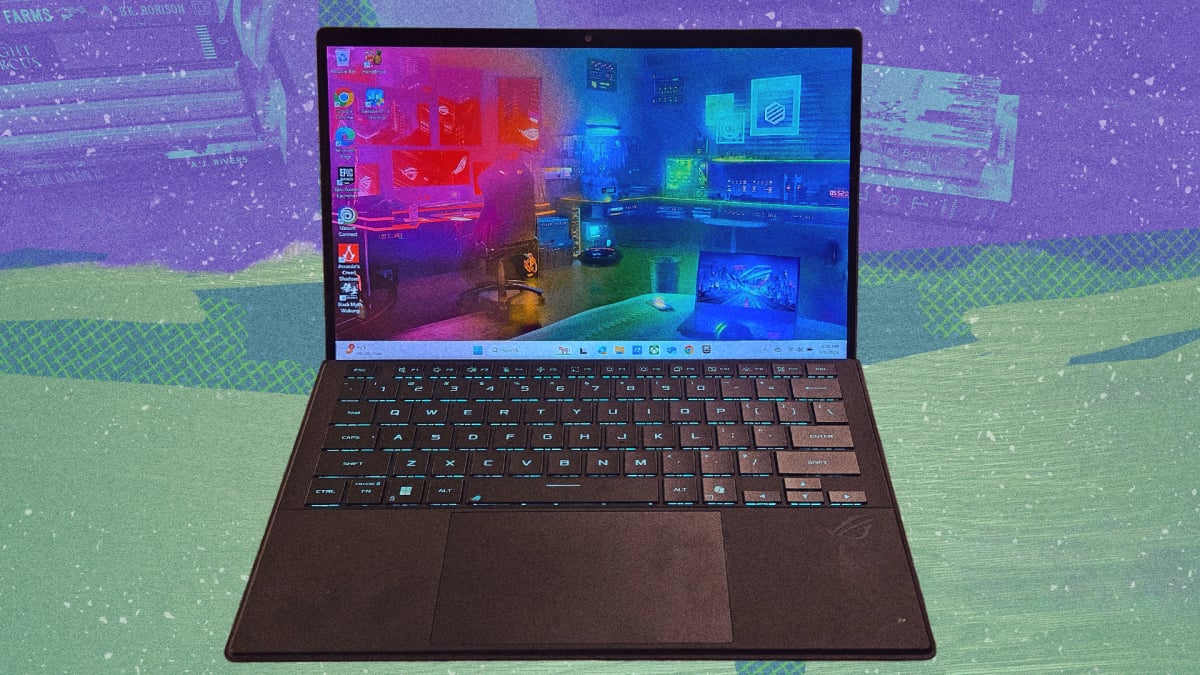Gaming tablet? 2-in-1? Creator Notebook? The current Z13 lands somewhere.
We can earn a committee with links on this page. Prices and availability Deal can be changed after publication.
For special PC gamers, integrated graphics usually get a lot of spot, and for a good reason. They are handy, and the aphs that they are in force takes up less space, but even the lowest graphic cards can usually perform better than the most capable apu. This means that companies usually retain aphs or processors with built -in graphic possibilities, to productivity notebooks and mobile devices instead of serious game machines.
With its Grand Strix Halo experiment, AMD wants to change all of that. The big brother of the productivity-oriented Strix Point Apu (which I have treated in my recent review of Acer's Swift 14 AI Ultraportable), the Strix Halo line wants to place discreet laptop GPUs to Weiland by offering high-end graphic images in a smaller, more thermal and powerful formfactor. Theoretically, these APU could allow game tablets or handhelds on game with high-end gaming laptops.
An example: the new Asus Rog Flow Z13 gametablet. But can the Z13 gaming outputness without losing the convenience of tablet style?
First impress
This is a ROG device (Republic of Gamers), so of course the RGB glow is immediately clear here. In particular, a small diagonal glass panel on the back of the device is illuminated with the required vibrant rainbow of shades, which will probably appeal more than others. The magnetically attachable folio keyboard also follows the example, with an adaptable range of which colors your heart wants. I am not sure when manufacturers decided exactly that gamers should be mesmerized to buy their devices by flickering colored lights, but the implementation in the Z13 is at least slightly tastier than other recent examples.

Credit: Alan Bradley
The other that you notice immediately after you have counted the Z13 out of his box is the handle. For a tablet this is a thick, chonky beast, which is in 2.74 lbs and 0.59 inches thick. For comparison, the steam deck is approximately 1.4 pounds. And that is before you record the folio keyboard, that the weight brings to 3.59 pounds. If you want to take your own charger with you, that is another 1.4 pound, for a total total that is only five pounds.
For a tablet of 13.4 inches that is a lot, and not the kind of things you want to keep for every duration while you narrow a latte. For comparison, consider the iPad Pro, of which the 13-inch model is less than half the weight and thickness of the Z13, at 1.28 LBS and 0.20 inch thick. With both hands I used the Z13 and I noticed that I often accidentally caused the touchscreen that only tried to grip on the thing, especially around the right and left edges.
It also has both front and disadvantaged cameras (5MP and 13MP respectively), although taking photos with a tablet is awkward enough, especially on one so heavy. However, the front camera is suitable for accepting calls and also means that the Z13 Windows Hello supports a sense of presence so that you can unlock the device with your face.
So it's a gaming laptop?
Not to spoil the rest of the review, but yes, I think the Z13 can best be positioned as a gaming laptop. Viewed as a laptop, that thickness of 0.59 inch is much more logical, making it slimmer than a modern Razer Blade 14 (at 0.71 inch) and considerably less circumference than a classic “musclebook”. That said, it is still not a device that you want to hold very often, and the folio keyboard supplied is almost essential for most applications.
Fortunately it is a fairly nice keyboard, as far as decoupling is going. The tactile character experience is pretty much fun for chiclets, and it clicks in place and makes it almost effortlessly (although not so easy that you will accidentally notice it). The standard on the back of the screen is also excellent. It is stiff enough to stay in every orientation in which you leave it, and has enough reach to almost lie flat to almost completely vertical. It even has a handy small pull tab on the right side that makes it a cent to take off without involving your fingernails.
That said, the whole design seems to beg for a fully integrated keyboard. If you are the type of person who uses a gaming tablet with the standard used and with a gamepad in hand, in contrast to the use of a handheld as a steam deck or Asus' own ally, there is a potential use case. Otherwise, a built -in keyboard is considerably more logical. Although the included keyboard is a decent folio, it cannot be compared to the type of premium experience that you would expect from a device that costs $ 2,300. You would sacrifice some of that thinness by going for a built -in keyboard, but for me it would be worth it, especially if it could fold 360 degrees to maintain the tablet experience.
Impressive, although not amazing, traces for gaming
Laptop or tablet, the Z13 is built for gaming, and it performs admirable, especially when you consider that it is missing a special GPU. This means that it not only has no special hardware for the display of graphic images, but also that the GPU System RAM has to share with the processor. That said, the model that I have assessed is equipped with a generous 32 GB RAM, and configurations are available with allocations up to a huge 128 GB.
The images of my review unit are handled by an integrated Radeon 8060S and an AMD Ryzen Ai Max+ 395, but there is also a slightly cheaper SKU with the Ryzen AI Max 390 and are less powerful 8050s graphic component. That will take your price to around $ 2,000 compared to the $ 2,300 of these models start MSRP.
In the Assassin Creed: Shadows -Benchmark that runs at high settings and with the resolution in the maximum of the Z13 of 2,560 x 1,600, the machine could supply an average of 41 fps. That is a strong result at those institutions in a recent Triple-A title that is notoriously quite demanding, especially for an integrated GPU. In the actual extensive gameplay there were a few noticeable dips in areas full of detail or populated with a large number of characters, but the tablet has never fallen below 30 fps, which I consider the floor for acceptable gaming performance.

Credit: Alan Bradley
The Z13 shone even more in the less stressful black myth: Wukong -Benchmark. At the native resolution at high institutions, the Z13 managed an average of 70 fps, a marking of the 180Hz display of the machine could fully benefit from (more about that later). Playing Wukong for an extensive session was a pleasure, in which a high frame rate was combined with low latency to provide a silky, soul-like action experience.
Perhaps the best context for performance from the results in the GPU benchmark from Geekbench 6. Here the Z13 delivered a score of 48.224 in OpenCL (a better size for graphic views for general purposes) and 64.780 in the Vulcan test (more suitable for measuring high -quality tasks such as gaming).
The Vulcan test places the 8060S in the margin of discreet laptop cards such as the Max-Q version of the GeForce RTX 2070 from Nvidia, or the Radeon RX 7600s on the AMD side. These are older GPUs from a few generations ago: Nvidia, for example, has just released the 50-series of its RTX cards.
The most important collection meals is that, although it is very impressive for an integrated GPU, the Z13 still under performance in graphic applications compared to low-end 40-series RTX cards, such as Nvidia's RTX 4060 or 4070 Laptop GPUs. This is crucial, because those cards are still regularly found in modern gaming laptops that are often available for considerably less than the Z13. But more about that later.
What do you think so far?
A solid productivity work horse
Some of the most impressive results I saw during testing were on the CPU side of things. In Geekbench 6 the Z13 scored 2,735 in single-core tests and a dazzling 16,680 in the multi-core benchmark. That is a great show for the 16-core, 32-Thread Ryzen Ai Max+ 395, which benefits from AMD's Zen 5-microarchitecture and has further innovations on the Interconnect side to guarantee fast communication between chipets. In other words: this thing can do more than gaming, but there is a catch.
A score of 16,680 rivals Some of the fastest processors currently included in laptopbuilds, and the single-core score is also not slow. But the results were slightly less impressive in Cinebench, which tests the display possibilities, with the Z13 achieving a multi-core score of 1,136 and a single-core score of 96.

Credit: Alan Bradley
That difference between benchmarks is curious and somewhat disturbing, given that the Z13 is primarily designed as a game machine. Geekbench is designed to simulate work taxes in practice, while Cinebench is more aimed at measuring the display of graphic views. It may not be possible to learn that a device without discreet graphics is better in productivity than gaming, but in this case this means that the Z13 might be better in office work than for which it is being marketed. That is a bit of an identity crisis, but if you are a gamer who moonlights in content creation, it adds value to the device for you.
A wonderful presentation
The display of the Z13 is a looker. It is an IPS panel of 180h a nod to potential use as a tablet, the screen is Gorilla Glass 5, so it can survive a drop despite its weight and circumference (forgive me that I have not tested that – this unit has been borrowed).

Credit: Alan Bradley
The Bezels are unobtrusive and the fencer experience is generally very pleasant. Colors pop, and although it does not have the lively color, deep black or blazing whites of an HDR-compatible OLED, games and video look crispy.
Battery life
The Strix Halo architecture in the heart of the Z13 is not the best for Marathon Office Work, but shows solid battery efficiency for gaming. In a standard productivity overview test (balanced power setting, energy saving and screen dimming, continuously streaming YouTube), the 70 WH battery lasted only a few minutes shy of 10 hours. Keep in mind that notebooks that are designed for efficiency can work more than double that on one load.
In various gaming tests at balanced settings, however, the Strix Halo delivered on average 84 minutes before it died. That is not a leading brand, but it is very impressive for modern AAA games. Also note that both performance and silent modes are available with the Z13 Unplugged, although the tablet limits the renewal speed of the screen to 60Hz when on the battery.

Credit: Alan Bradley
